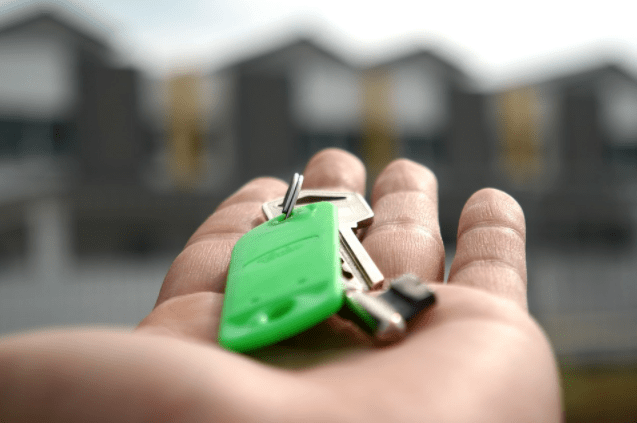Current Mortgage Rates & Home Loans Calculator
Calculate Your Mortgage Payments, Rates, Principal, Fees, and Taxes Today
Buying a home is one of the most important purchases you will ever make. Not surprisingly, it also tends to be one of the most expensive.
Your monthly mortgage cost will depend on a variety of factors, including the total amount of the loan, interest rates, down payment, terms, and even your credit score.
With so many moving parts, how do you know if you can afford the house that you want?
You may want to consider using financial tools like mortgage calculators to get a clearer view of how much you will need to put away before you finalize the mortgage paperwork.
Down Payment Basics
Although many lenders require a down payment of 3 percent, the best way to secure better rates is to put down 20 percent.
Along with getting more favorable interest rates, a higher down payment means that you can avoid paying extra for private mortgage insurance (PMI).
Lenders require the purchase of mortgage insurance for down payments less than 20 percent to protect their investments in case borrowers stop making payments.
Typically, borrowers must continue paying PMI until they reach a loan-to-value ratio of 80 percent.
Of course, if you don’t mind paying for PMI, it does save you from putting down a full 20 percent for your home. While it may not help you cut down costs over the long-term, it certainly does make purchasing a home more affordable in the short-term.
It’s also possible that, depending on the amount borrowed, paying for private mortgage insurance might not be a financial burden.
According to Zillow, the average premium for PMI ranges between $30-$70 for every $100,000 borrowed, which could make it an affordable compromise for borrowers that can’t put down the full 20 percent.



How to Save for a Down Payment
When it comes to purchasing a home, many new homeowners struggle with saving enough money for a sizable down payment.
Making a larger down payment can save you tons of money in the long run—but if you don’t have a savings already set up, the thought of putting aside thousands of dollars can seem overwhelming.
Below, we’ve listed a few tips to help set you up for success when saving for a down payment:
Re-Examine Your Budget
If you don’t already have a budgeting system in place, you may want to consider taking a close look at where your money is going each month.
While some expenses are non-negotiable, like rent or car insurance, you may find that you are overspending in non-essential categories without even realizing it.
Free budgeting tools—like those from Mint and Personal Capital—will take your monthly expenditures and sort them into categories like food, restaurants, bars, and entertainment.
For example, if you find that you’re spending tons of money each month on dining out, you can use budgeting tools to decrease spending and allocate those savings towards your new down payment fund.
Pick Up Additional Income
While it may not be an ideal method of building your down payment savings, earning additional income is certainly a great way to increase your financial stability.
There are plenty of options for stay-at-home jobs to consider, or you can pick up a part-time job on the weekends to supplement your full-time income.
Make a commitment to apply your part-time income towards your mortgage savings, and you will be in good shape to put down a sizable down payment.
Create an Automated Savings Plan
Unless you are one of the few who have already established a regular savings routine, you may want to consider signing up for an automated savings plan.
Many financial institutions have optional savings plans that will automatically transfer funds from your checking on a regular basis.
For example, the Way2Save® Savings Account from Wells Fargo will automatically transfer $1 every time you:
- Use your debit card for purchases
- Use Bill Pay
- Make automatic payments
You can also choose to have $25 transferred automatically each month to build up your savings.
If you primarily use your debit card to make purchases, signing up for an automated savings plan like what Wells Fargo offers can be an easy and convenient way to supplement your saving.
Find the Right Lender
Once you have an idea as to how much you could be paying for a mortgage, your next step is to evaluate rates and terms from top lenders.
Make sure that you compare offers from multiple lenders to ensure that you are getting the best deal. You can use any of the mortgage calculators below to help you evaluate the right mortgage amount and terms to fit your financial needs:
Having an affordable, manageable mortgage is determined not just by your monthly payments, but also by interest rates and mortgage terms—so don’t be afraid to shop around until you find the best mortgage for your financial needs.
AdvisoryHQ (AHQ) Disclaimer:
Reasonable efforts have been made by AdvisoryHQ to present accurate information, however all info is presented without warranty. Review AdvisoryHQ’s Terms for details. Also review each firm’s site for the most updated data, rates and info.
Note: Firms and products, including the one(s) reviewed above, may be AdvisoryHQ's affiliates. Click to view AdvisoryHQ's advertiser disclosures.



